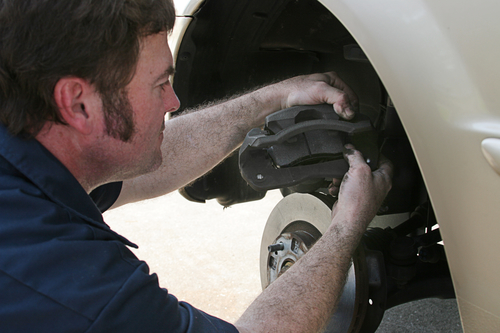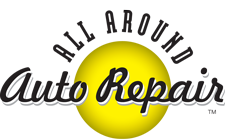Brake inspection is one car maintenance activity that should never be ignored. Inside every automobile you can find a variety of complex systems and components that all play critical roles in the way a vehicle functions. Among these is one of the most fundamental systems that can be found within the structure of a vehicle and that is the braking system.
 Why You Should Keep A Brake Inspection Schedule
Why You Should Keep A Brake Inspection Schedule
When driving on roads it is of the utmost importance that all vehicles have the ability to slow down or stop. Whether it be voluntarily or suddenly being able to stop ensures your safety and the safety of others. So proper maintenance and prompt attention to any existing issues serve to make sure that braking systems on vehicles are up to standard.
When taking your vehicle for scheduled oil changes persons should use this time to get their brake system inspected. This inspection usually includes a fluid level and condition check, an inspection of the brake pads/shoes for wear and a thorough manual check for fluid leaks.
Once a vehicle is being used brake fluid levels naturally decrease but substantial drops below the mark on the master cylinder could indicate that a leak in the system is present. If a leak is identified measures to rectify this as soon as possible should be taken as this can cause a rapid malfunction in the system.
Warning lights are another essential component of the braking system and are used to indicate several things. For instance if the parking brake is applied, the brake fluid levels are low or there is a loss of pressure in one of the brake system hydraulic circuits. So in event that these warning lights become visible drivers should ensure that they promptly get vehicles inspected and repaired so that vehicles are functioning properly before taking to the road.
Another important light as it relates to the braking system is the brake pad warning light. This light indicates when brake pads need replacing which is critical to the safety of drivers as worn pads are a diving risk. So if this light comes on drivers are urged to get their brake pads replaced to ensure their braking system is working efficiently as well as to ensure their safety and the safety of other road users.
In addition to this you should schedule a diagnosis if you experience the following conditions while driving.
-
the steering wheel shimmies or pulls to one side when applying the brakes.
-
the vehicle continues to travel before braking begins.
-
it takes extreme pressure to brake and slow down the vehicle.
-
braking generates a pulsation.
Another issue that braking systems of vehicles experience is a the formation of a light rust coating on the brake rotors of vehicles. This mostly occurs in vehicles that are parked at seaside locations or in humid climates and causes a noise similar to metal-to-metal contact when applying the brakes.
This is very annoying and can make any driving experience uncomfortable so be sure to have these areas inspected as well if you reside in either of these kinds of locations.
For most vehicles brake inspection and maintenance are typically performed when needed however it is recommended that this be conducted as regular as your oil change. You may not always have the time or cash to spare however it is always best to get any issue with your vehicle diagnosed and repaired promptly as it can save you from spending more in the future as well as to put your mind at ease while driving on roads. Contact us for more information.

